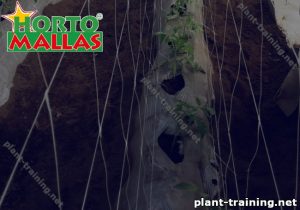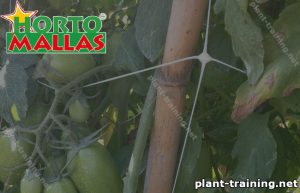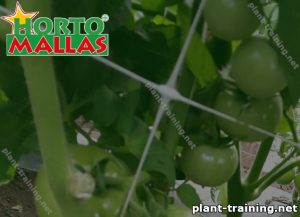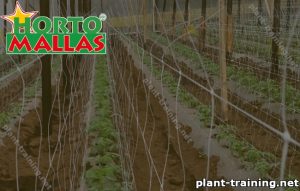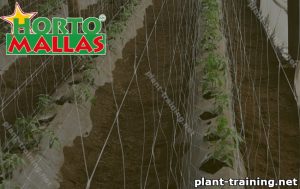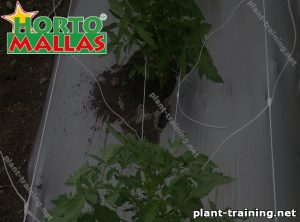Training plants will help you get better quality yield
Have you considered training plants in your garden? There are many different types of plants to train and various ways to train them. You can train plants in your garden to inject some beautiful foliage or train some vegetables and fruit to enjoy with the family.
Why should I train my plants?
Tutoring plants once you have the knack of how to do it will keep your plants low maintenance and easy to deal with. It will also provide you with a privacy screen. Tutoring plants on plastic netting will help you to create a beautiful landscape scene in your backyard. Training on trellis will help you to create a beautiful landscape scene in your backyard. You can train plants over a frame and create a pergola of shade to enjoy in summer. If you plant some climbers and build an arch frame from one side of a path to the other you then have a lovely floral entrance way. If you’re a keen gardener you may have just went crazy growing all sorts of plants and have little space left. Perhaps you are living with someone else and cannot put up any permanent structures head upwards. Vertical growing is a modern technique that can help make use of small spaces or that awkward place in your garden you don’t know what to put there. Vertical growing helps you get the most out of your garden. You can turn your boring, over run garden into a scene of beautiful greenery.

Climbers or sprawlers?
A good place to start is with a vegetable or fruit that is naturally a climber or is easy trained to do so. Training plants that are good to use are climbing peas and beans, tomatoes melons, squashes and pumpkins. Climbers will produce tendrils that will cling onto a structure and slowly pull themselves up. Sprawlers like courgettes and tomatoes will need to be tied to the support structure at different times of its growing cycle. Training plants like the popular apple or the delightful cherry can be trained into shapes or vertical cordons and pretty much any type of shape you can create. Then there are cane fruits which grow quite tall like raspberries. With cane fruits you need to make sure you don’t allow them to flow around onto their neighboring plants. These plants are best tied down to posts individually.
Growing climbers
Suckers: These have little tendrils that have a stick like substance on them that can stick to anything and are hard to remove.
Twiners: These too have tendrils that twist around anything that is close by from wire to a pole to plants.
Clingers: These types do not need any support they grow large robust roots that stems are in contact with a vertical support structure.
Winders: They will coil their stems all around garden stakes or other support structure all in one direction.
Ramblers: They will use thorns to grab onto something to support them. These will need extra training and tying down.
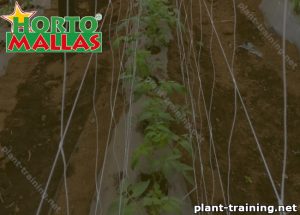
Trellising vegetables and fruits is a garden technique that keeps plants away from moist soil and makes creative use of a small vacant space. Plant training is all about using less ground space and tutoring the plants to grow how you want them to. You can fit more plants into a garden bed, pest control and an easier way to monitor and prune the plants. Accessing the plants is easy as there is no bending over or crouching down. There is no risk of injuring your eyes or hands by bending down into the bush trying to avoid all the vines sticking out. There is also no harvest waste from rot when the fruit or vegetables sit in the moist soil. You won’t miss out of any hidden ripe fruit that may be hidden from all the uncontrollable growth.
There are so many benefits to training plants
Trellising is fantastic for growing plants but it’s important to remember to place trellises on the north side of the garden so you don’t end up shading other plants.
Also take note to dig your anchors in deep to avoid falling over in the harsh wind conditions and the extra added weight when the fruit and veggies develop.
Best suited for plant training are:
- Tomatoes will continue to produce fruit until the frost
- With cucumbers you need to find a non-bush type. As bush types don’t need any support
- Pole beans and melons these have large produce but with the added support of a hammock for the melons they can be trellised
- Pumpkins only grow non-bush and miniature types like a corn. They are suitable for plastic netting
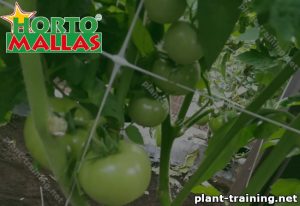
Do I need to prune?
You will need to prune to help control the size your plant grows to. If you don’t prune, the plant will continue to grow over spaces. You may rather control it not and if let go it will crowd your other plants. Plants like cucumbers need to be pruned to help in aid of them growing upwards. Pruning will improve the amount of sunlight the plants get as well as improving the air circulation around the plants this will help prevent diseases. When training plants pruning will help you get better quality yield. Cut off the growth that is not useful so the plants energy can be focused on the fruit. When your plants are not pruned they get overgrown and fruit can end up being hidden and will rot when left sitting on the soil.
It may also be beneficial when training plants to provide some protection against weeds. Weed fabric is non-fraying and is used commonly in backyard gardens and in business landscaping. Weed fabric provides protection from the weeds overtaking your garden and gives you more time to spend enjoying your garden rather than wasting time and energy pulling out weeds.
